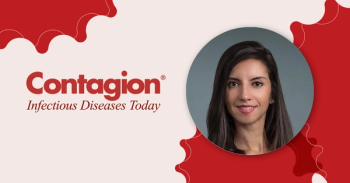
1 in 4 Parents Disregarded COVID-19 Safety Procedures for Their Children
The most common reasons parents cited for hiding a child’s COVID-19 infection included an inability to stay home from work and wanting to make decisions about their child’s health without outside input from authorities.
The
A new
A national, nonprobability sample of US adults were recruited through Qualtrics to complete an online survey about COVID-19 experiences. The final sample included 1733 US adults, 33.5% (n = 580) of whom were parents with children younger than 18 years old living with them during the COVID-19 pandemic.
From December 8-23, 2021, parents were asked whether they had ever engaged in any of 7 types of misrepresentation and nonadherence behaviors regarding COVID-19 public health measures for their children. Parents’ race, ethnicity, and other demographic data were collected to account for COVID-19 and public health measures disproportionately affecting underserved populations.
The investigators utilized descriptive statistics to determine the prevalence of and justifications for parents misrepresenting or disregarding COVID-19 protocols for children. Multiple logistic regression examined traits potentially associated with responses.
Of the 580 participants, the average age was 35.9 years, and 70.2% (n = 403) identified as women. Broken down by race and ethnicity, 67.1% were non-Hispanic White, 14.8% were non-Hispanic Black, 13.8% were Hispanic, 2.4% were non-Hispanic Asian, 0.9% were non-Hispanic American Indian or Alaskan Native, 0.9% were more than 1 race, and 0.2% were White with no specified ethnicity.
A total of 25.9% of parents (n = 150) reported misrepresentation and/or nonadherence in at least 1 of 7 behaviors. At 24.0% (n = 63 of 263), the most common behavior was not telling someone who was with their child that they suspected or knew their children had COVID-19. The penultimate behavior was 21.1% of parents (n = 67 of 318) allowing their child to break quarantine protocols.
Angela Fagerlin, PhD, the study’s senior author, said these findings raise concerns that parental reluctance to disclose children’s COVID-19 status or adhere to COVID-19 protection protocols likely contributed to the spread of the disease, and perhaps the high rates of hospitalization and death.
The most commonly cited reason for digressing from COVID-19 public health practices was wanting to exercise personal freedom as a parent. Additional reasons included wanting their child’s life to feel “normal,” and not being able to miss work or other responsibilities to stay home with an infected child.
On the other end of the spectrum, some parents lied about their children’s age so that they could receive a COVID-19 vaccine. “Parents might have thought that fibbing about their child’s age was a good thing because it would help them stay healthy and safe from the virus and potentially protect others around them,” said Fagerlin, “But there was a cut-off age for a reason. The vaccine hadn’t been tested in younger aged children and it wasn’t clear that it would be safe or effective for them.”
Exploratory multiple logistic regression revealed that there were no characteristics, such as education or religiosity, that were correlated with misrepresenting or neglecting COVID-19 protocols.
One limitation of this survey study was that 70.2% of participants were women, and thus the sample is not representative of the US’s population demographics. Another limitation, Fagerlin predicts, is some respondents may have been “lying about lying.”
“If anything, 26% is probably the minimum number of parents who misrepresented their children’s COVID-19 status during the pandemic,” she said.
In their conclusion, Fagerlin and fellow investigators recommended further research to identify the groups with the highest risk of misrepresentation and nonadherence. However, rather than placing all the blame on parents, they also noted that measures such as paid sick leave for family illnesses will make parents less inclined to conceal or disregard a child’s COVID-19 infection.
Newsletter
Stay ahead of emerging infectious disease threats with expert insights and breaking research. Subscribe now to get updates delivered straight to your inbox.





















































































































































































































































































